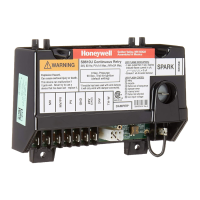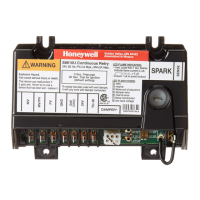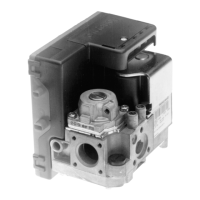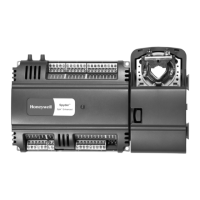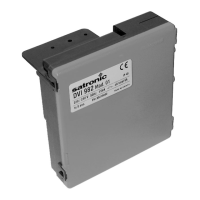S8600B,C,H,M; S8610B,C,H,M; S8670D,E,J,K INTERMITTENT PILOT GAS IGNITION CONTROL
บริษัท เอดีดี เฟอร์เนส จํากัด
ADD FURNACE CO.,LTD.
44 ซอยบรมราชชนนี 70 ถนนบรมราชชนนี แขวงศาลาธรรมสพน์ เขตทวีวัฒนา กรุงเทพฯ 10170
โทร: 02-888-3472 โทร: ออกแบบ:08-08-170-170 แฟกซ์: 02-888-3258
https://www.add-furnace.com E-mail: sales@add-furnace.com
GAS LEAK TEST (DOWNSTREAM OF GAS
CONTROL)
Paint the gas control gasket edges and all pipe
connections downstream of the gas control,
including the pilot tubing connections, with a rich
soap and water solution. Bubbles indicate gas
leaks. Tighten the joints and screws or replace
component to stop gas leak. Recheck with soap
and water solution.
f.
Turn the thermostat or controller below the room
temperature. Make sure the main burner and
pilot flames go out.
OPERATION
Module operation can be conveniently divided into two
phases for the S8600 and S8610 and three phases for the
S8670.
The phases are:
•
Prepurge (S8670 models only)—See Fig. 10
•
Trial for ignition (all models)
•
Main burner operation (all models)
Fig. 9-10 summarize the normal operating sequences of
all the models.
Prepurge (S8670 models Only)
When an S8670 model is used in a fan-assisted
combustion system, the combustion air blower starts on a
call for heat. On proof of airflow, the air proving switch
closes and energizes the S8670. When this model is used
in an atmospheric system, the “Call for Heat” energizes
the module.
In either case, the module first initiates a 30 second delay
to allow system prepurge. After prepurge, the module
starts the trial for pilot ignition sequence.
Trial for Pilot Ignition
On a “Call for Heat” (and after prepurge on S8670
models), the module energizes the spark source and the
pilot valve relay simultaneously. The pilot valve opens,
allowing gas to flow to the pilot burner for the ignition trial
time. The spark lights the pilot flame when pilot gas is
present. A flame rectification circuit confirms the presence
of the pilot flame, shuts off the spark source, and
energizes the main valve relay.
The S8600 family uses a two-level pilot flame proving
sequence. When a sufficient flame current is sensed, the
spark is turned OFF. However, the pilot flame must
generate a higher level of flame current to energize the
main valve. This approach assures a stable pilot flame to
support reliable burner lightoff. If the pilot flame is weak or
unstable, the spark may turn back ON. However, the trial
for pilot ignition will not exceed the stated ignition trial time
Main Burner Operation
When the main valve opens, gas flows to the main burner
where it is lit by the pilot flame. There is a short flame
stabilization period as the main valve opens to allow the
pilot flame to stabilize as the main gas lights. The system
is now in the run mode with the presence of the pilot flame
continuously monitored by the flame rectification circuit. If
the pilot flame goes out, the control senses loss of pilot
flame and shuts off both the pilot valve relay and the main
valve relay. Flow of gas to pilot and main burners stops as
the valves close.
FAILED TRIAL FOR PILOT
IGNITION
Lockout Models—S8600B,H; S8610B,H;
S8670D,J
Lockout models provide a single trial for pilot ignition
sequence. If the pilot flame is not lit and sensed before
the end of the ignition trial time, the control shuts off the
pilot valve (100% shutoff) and goes to lockout. The control
remains in lockout until power to the control is cycled by
the system thermostat or by removing and restoring
system power.
Continuous Retry Models—S8600C,M;
S8610C,M; S8670E,J
Continuous retry models provide multiple trials for ignition.
If the pilot is not lit or sensed before the end of the trial for
ignition time, the control shuts off the spark and pilot gas
(100% shutoff). There is a 5 minute delay before another
ignition sequence is initiated. The pattern of ignition
sequence followed by a 5 minute delay continues until the
pilot lights and is proved or the “Call for Heat” ends. The 5
minute delay time can be bypassed by cycling the system
thermostat or removing and restoring system power.

